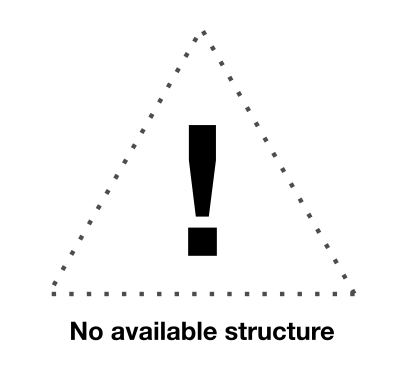Q63945
Gene name |
Set (Ab1-115) |
Protein name |
Protein SET |
Names |
Liver regeneration-related protein LRRGR00002 , Phosphatase 2A inhibitor I2PP2A , I-2PP2A , Template-activating factor I , TAF-I |
Species |
Rattus norvegicus (Rat) |
KEGG Pathway |
rno:307947 |
EC number |
|
Protein Class |
|

Descriptions
Autoinhibitory domains (AIDs)
Target domain |
237-289 (C-terminal regions) |
Relief mechanism |
Others |
Assay |
|
Accessory elements
No accessory elements
Autoinhibited structure

Activated structure

1 structures for Q63945
| Entry ID | Method | Resolution | Chain | Position | Source |
|---|---|---|---|---|---|
| AF-Q63945-F1 | Predicted | AlphaFoldDB |
No variants for Q63945
| Variant ID(s) | Position | Change | Description | Diseaes Association | Provenance |
|---|---|---|---|---|---|
| No variants for Q63945 | |||||
No associated diseases with Q63945
No regional properties for Q63945
| Type | Name | Position | InterPro Accession |
|---|---|---|---|
| No domain, repeats, and functional sites for Q63945 | |||
Functions
7 GO annotations of cellular component
| Name | Definition |
|---|---|
| chromatin | The ordered and organized complex of DNA, protein, and sometimes RNA, that forms the chromosome. |
| cytoplasm | The contents of a cell excluding the plasma membrane and nucleus, but including other subcellular structures. |
| cytosol | The part of the cytoplasm that does not contain organelles but which does contain other particulate matter, such as protein complexes. |
| endoplasmic reticulum | The irregular network of unit membranes, visible only by electron microscopy, that occurs in the cytoplasm of many eukaryotic cells. The membranes form a complex meshwork of tubular channels, which are often expanded into slitlike cavities called cisternae. The ER takes two forms, rough (or granular), with ribosomes adhering to the outer surface, and smooth (with no ribosomes attached). |
| nucleoplasm | That part of the nuclear content other than the chromosomes or the nucleolus. |
| nucleus | A membrane-bounded organelle of eukaryotic cells in which chromosomes are housed and replicated. In most cells, the nucleus contains all of the cell's chromosomes except the organellar chromosomes, and is the site of RNA synthesis and processing. In some species, or in specialized cell types, RNA metabolism or DNA replication may be absent. |
| perinuclear region of cytoplasm | Cytoplasm situated near, or occurring around, the nucleus. |
3 GO annotations of molecular function
| Name | Definition |
|---|---|
| chromatin binding | Binding to chromatin, the network of fibers of DNA, protein, and sometimes RNA, that make up the chromosomes of the eukaryotic nucleus during interphase. |
| DNA binding | Any molecular function by which a gene product interacts selectively and non-covalently with DNA (deoxyribonucleic acid). |
| histone binding | Binding to a histone, any of a group of water-soluble proteins found in association with the DNA of eukaryotic or archaeal chromosomes. They are involved in the condensation and coiling of chromosomes during cell division and have also been implicated in gene regulation and DNA replication. They may be chemically modified (methylated, acetlyated and others) to regulate gene transcription. |
3 GO annotations of biological process
| Name | Definition |
|---|---|
| endothelial cell differentiation | The process in which a mesodermal, bone marrow or neural crest cell acquires specialized features of an endothelial cell, a thin flattened cell. A layer of such cells lines the inside surfaces of body cavities, blood vessels, and lymph vessels, making up the endothelium. |
| nucleosome assembly | The aggregation, arrangement and bonding together of a nucleosome, the beadlike structural units of eukaryotic chromatin composed of histones and DNA. |
| positive regulation of transcription by RNA polymerase II | Any process that activates or increases the frequency, rate or extent of transcription from an RNA polymerase II promoter. |
7 homologous proteins in AiPD
| UniProt AC | Gene Name | Protein Name | Species | Evidence Code |
|---|---|---|---|---|
| O19110 | TSPY1 | Testis-specific Y-encoded protein 1 | Bos taurus (Bovine) | PR |
| Q9H2G4 | TSPYL2 | Testis-specific Y-encoded-like protein 2 | Homo sapiens (Human) | PR |
| Q8N831 | TSPYL6 | Testis-specific Y-encoded-like protein 6 | Homo sapiens (Human) | PR |
| P0DME0 | SETSIP | Protein SETSIP | Homo sapiens (Human) | SS |
| Q01105 | SET | Protein SET | Homo sapiens (Human) | SS |
| Q9EQU5 | Set | Protein SET | Mus musculus (Mouse) | EV |
| Q9R1M3 | Tspy1 | Testis-specific Y-encoded protein 1 | Rattus norvegicus (Rat) | PR |
| 10 | 20 | 30 | 40 | 50 | 60 |
| MAPKRQSAIL | PQPKKPRPVA | APKLEDKSAS | PGLPKGEKEQ | QEAIEHIDEV | QNEIDRLNEQ |
| 70 | 80 | 90 | 100 | 110 | 120 |
| ASEEILKVEQ | KYNKLRQPFF | QKRSELIAKI | PNFWVTTFVN | HPQVSALLGE | EDEEALHYLT |
| 130 | 140 | 150 | 160 | 170 | 180 |
| RVEVTEFEDI | KSGYRIDFYF | DENPYFENKV | LSKEFHLNES | GDPSSKSTEI | KWKSGKDLTK |
| 190 | 200 | 210 | 220 | 230 | 240 |
| RSSQTQNKAS | RKRQHEEPES | FFTWFTDHSD | AGADELGEVI | KDDIWPNPLQ | YYLVPDMDDE |
| 250 | 260 | 270 | 280 | ||
| EGEAEDDDDD | DEEEEGLEDI | DEEGDEDEGE | EDDDEDEGEE | GEEDEGEDD |